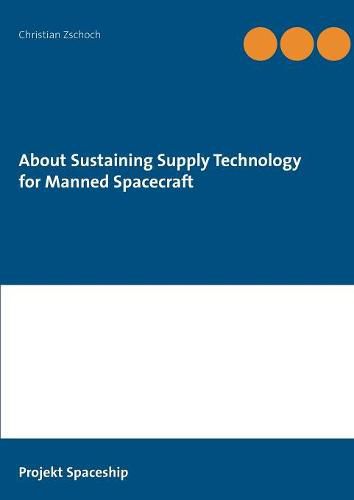Readings Newsletter
Become a Readings Member to make your shopping experience even easier.
Sign in or sign up for free!
You’re not far away from qualifying for FREE standard shipping within Australia
You’ve qualified for FREE standard shipping within Australia
The cart is loading…






This title is printed to order. This book may have been self-published. If so, we cannot guarantee the quality of the content. In the main most books will have gone through the editing process however some may not. We therefore suggest that you be aware of this before ordering this book. If in doubt check either the author or publisher’s details as we are unable to accept any returns unless they are faulty. Please contact us if you have any questions.
At the present time, space travel is characterized by separately developed technologies of the space-traveling nations. Depending on fixed financial budgets and expensive technology companies, the developed spaceships are strongly designed just for a specific mission profile in order to reduce costs and risks as far as possible. Because of their less sustainable supply concept, these spacecraft allow only a limited mission duration and require regular supply deliveries in addition. On the other hand side, mission periods continue to lengthen with the planned exploration of Mars, asteroids or other objects that are even more distant. These missions will require high sustainable supply concepts in order to enable autonomous and long-term life support of human mission participants. The now existing solutions do not yet meet these requirements, so the current approach of spacecraft design had to undergo a conceptual review. The research made in the context of this work led to the design of a new generation of spacecraft, which supports with its optimized hull construction such extended long-term missions in terms of durability, variability and life support. All its embedded biological and chemical processes have, on the one hand, the primary aim to enable humans a long stay in space and, on the other hand, to be independent of an external mission supply. The performed research activities also included the necessary mechanical and energetical functions for which an extreme lifetime extension of up to 60 years was aimed.
$9.00 standard shipping within Australia
FREE standard shipping within Australia for orders over $100.00
Express & International shipping calculated at checkout
This title is printed to order. This book may have been self-published. If so, we cannot guarantee the quality of the content. In the main most books will have gone through the editing process however some may not. We therefore suggest that you be aware of this before ordering this book. If in doubt check either the author or publisher’s details as we are unable to accept any returns unless they are faulty. Please contact us if you have any questions.
At the present time, space travel is characterized by separately developed technologies of the space-traveling nations. Depending on fixed financial budgets and expensive technology companies, the developed spaceships are strongly designed just for a specific mission profile in order to reduce costs and risks as far as possible. Because of their less sustainable supply concept, these spacecraft allow only a limited mission duration and require regular supply deliveries in addition. On the other hand side, mission periods continue to lengthen with the planned exploration of Mars, asteroids or other objects that are even more distant. These missions will require high sustainable supply concepts in order to enable autonomous and long-term life support of human mission participants. The now existing solutions do not yet meet these requirements, so the current approach of spacecraft design had to undergo a conceptual review. The research made in the context of this work led to the design of a new generation of spacecraft, which supports with its optimized hull construction such extended long-term missions in terms of durability, variability and life support. All its embedded biological and chemical processes have, on the one hand, the primary aim to enable humans a long stay in space and, on the other hand, to be independent of an external mission supply. The performed research activities also included the necessary mechanical and energetical functions for which an extreme lifetime extension of up to 60 years was aimed.